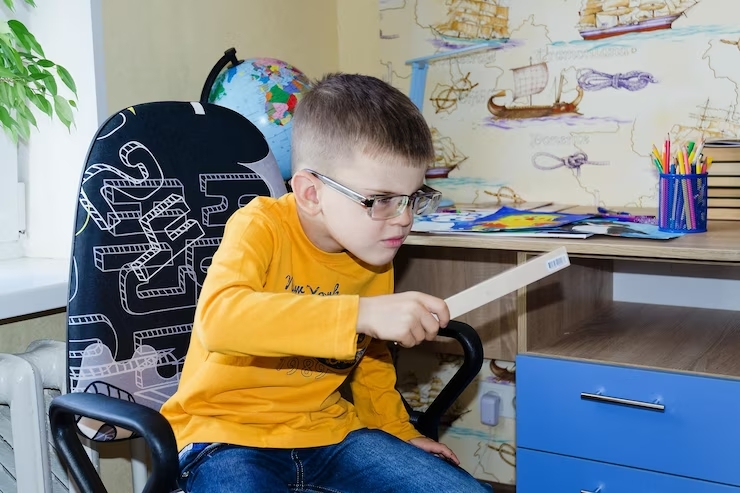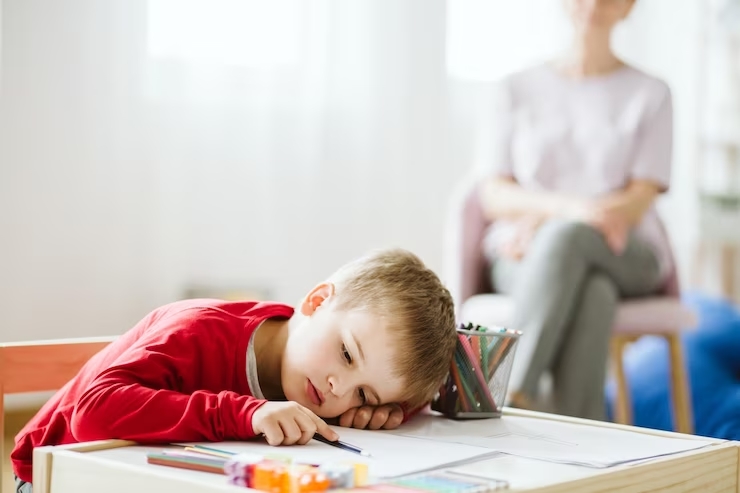A Comprehensive Guide to Understanding Attention in Children: Definition, Assessment, and Support
Understanding attention deficit disorders
Understanding Attention in Children: defining, assessing, and supporting. This guide offers a comprehensive understanding in 3 key areas.
Attention deficit disorders, such as Attention Deficit Hyperactivity Disorder (ADHD), are neurodevelopmental conditions that significantly impact a child’s ability to focus, control impulses, and regulate their energy levels. These disorders can manifest in various ways, including difficulties sustaining attention, hyperactivity, and impulsivity. Understanding the underlying neurobiological mechanisms of these disorders is crucial for effective management and support.
Signs and symptoms of attention difficulties in children
 Recognizing the signs and symptoms of attention difficulties in children is essential for early intervention and support. Some common indicators include:
Recognizing the signs and symptoms of attention difficulties in children is essential for early intervention and support. Some common indicators include:
- Difficulty sustaining attention on tasks or activities
- Easily distracted by external stimuli
- Impulsivity and acting without thinking
- Forgetfulness and frequently losing items
- Difficulty organizing tasks and activities
- Avoidance of tasks requiring sustained mental effort
It’s important to note that these symptoms may vary in severity and presentation among children.
Assessing attention in children: tools and techniques
Assessing attention in children involves a comprehensive evaluation of various aspects, including attention span, focus, and impulse control. Several tools and techniques are available for professionals to assess attention, such as:
- Behavioral observation
- Questionnaires and rating scales completed by parents, teachers, and caregivers
- Neuropsychological testing to assess cognitive functions related to attention
- Continuous performance tasks to measure sustained attention and response inhibition
A thorough assessment provides valuable insights into a child’s attentional strengths and weaknesses, guiding the development of tailored interventions.
Strategies to support attention in children
Supporting attention in children requires a multifaceted approach that addresses their unique needs and challenges. Some effective strategies include:
- Establishing routines and clear expectations
- Breaking tasks into smaller, manageable steps
- Providing visual aids and organizational tools
- Incorporating frequent breaks and movement breaks
- Offering praise and positive reinforcement for sustained attention
- Teaching self-regulation techniques, such as deep breathing and mindfulness exercises
By implementing these strategies consistently, children can develop more effective attentional skills over time.
Creating an optimal environment for attention
The environment plays a significant role in shaping attentional abilities in children. Creating an optimal environment involves:
- Minimizing distractions, such as noise and clutter
- Designating a quiet, well-lit workspace for studying and tasks
- Establishing clear boundaries and expectations for behavior
- Incorporating elements of nature, such as natural light and greenery, which have been shown to enhance attention and concentration
By optimizing the environment, children can better focus their attention and maximize their learning potential.
Developing attention skills through play and activities
Play-based activities offer valuable opportunities for children to develop and strengthen their attentional skills in a fun and engaging manner. Some effective activities include:
- Board games that require sustained attention and turn-taking
- Puzzles and construction toys that promote problem-solving and focus
- Outdoor play, such as nature walks and scavenger hunts, to stimulate curiosity and observation skills
- Art and craft activities that encourage sustained focus and creativity
By incorporating these activities into daily routines, children can enhance their attentional abilities while enjoying themselves.
 Building a support system for children with attention difficulties
Building a support system for children with attention difficulties
Building a support system for children with attention difficulties involves collaboration among parents, teachers, healthcare professionals, and other caregivers. Key components of a support system include:
- Open communication and collaboration among all stakeholders
- Access to appropriate educational and therapeutic interventions, such as behavioral therapy and academic accommodations
- Providing emotional support and encouragement to the child
- Educating family members and educators about the child’s specific needs and strategies for support
By working together, the support system can help children with attention difficulties thrive academically, socially, and emotionally.
Working with educators and professionals in supporting attention
Collaboration between educators and professionals is essential for providing comprehensive support to children with attention difficulties. This collaboration involves:
- Sharing information and observations about the child’s attentional needs and progress
- Collaboratively developing and implementing individualized education plans (IEPs) or 504 plans with appropriate accommodations and interventions
- Providing training and resources for educators to effectively support children with attention difficulties in the classroom
- Establishing regular communication channels to monitor the child’s progress and adjust interventions as needed
By working together, educators and professionals can create an inclusive and supportive learning environment for all children (attention in children).
Conclusion and the importance of early intervention
 In conclusion, understanding and supporting attention in children is crucial for their overall development and academic success. By recognizing the signs and symptoms of attention difficulties, assessing attentional abilities, and implementing effective strategies and interventions, we can help children enhance their attention skills and reach their full potential. Early intervention is key to addressing attention difficulties and preventing long-term negative outcomes. By providing support and guidance, we can empower children to thrive in a world filled with distractions and challenges (attention in children).
In conclusion, understanding and supporting attention in children is crucial for their overall development and academic success. By recognizing the signs and symptoms of attention difficulties, assessing attentional abilities, and implementing effective strategies and interventions, we can help children enhance their attention skills and reach their full potential. Early intervention is key to addressing attention difficulties and preventing long-term negative outcomes. By providing support and guidance, we can empower children to thrive in a world filled with distractions and challenges (attention in children).
Learn more about A Comprehensive Guide to Understanding Attention in Children: Definition, Assessment, and Support on our YouTube channel.
A Comprehensive Guide to Understanding Attention in Children
#attentioninchildren #attentiondeficithyperactivitydisorder #adhd #childpsychology



